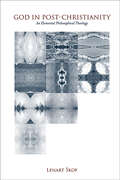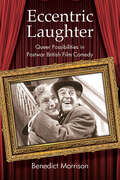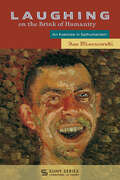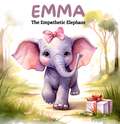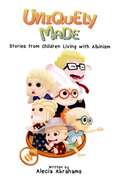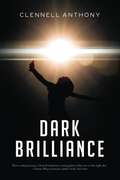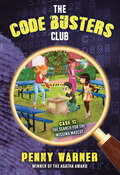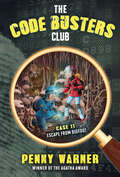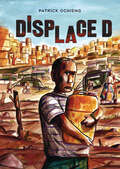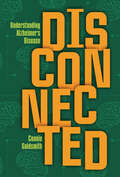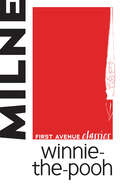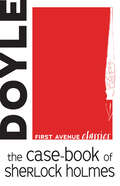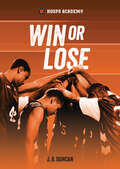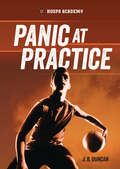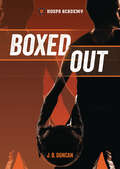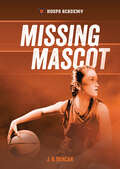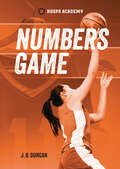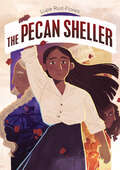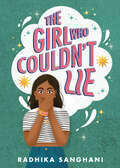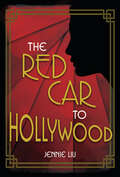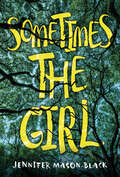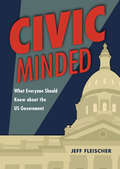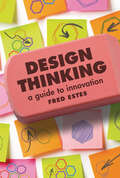- Table View
- List View
God in Post-Christianity: An Elemental Philosophical Theology (SUNY series in Theology and Continental Thought)
by Lenart ŠkofGod in Post-Christianity combines Eastern and Western influences into a dazzling survey of the contemporary theological landscape. Reading "the age of the Spirit" as "the age of the Breath," the book argues for a material, elemental, and sensory theology of God following the death of the ontotheological God of metaphysics. Drawing inspiration equally from Irigaray and Feuerbach, it offers a vision of God that is both feminist and humanist, a divine becoming for humanity, a sacred alliance with Nature. By presenting and analyzing the modern philosophies of Hegel, Schelling, and Merleau-Ponty, as well as such contemporary figures as John Caputo and Catherine Keller, and by drawing on unexpected, forgotten, or neglected sources such as Vedic poetry and American Mormonism and figures such as Averroes and Amalric of Bène, the book makes an original argument about God that resonates with currents in new materialism, comparative theology, and affect theory. Both speculative and mythopoetic, it is intended to forge a way forward for humanity to achieve the intersubjective and interreligious peace we all crave and deserve.
Eccentric Laughter: Queer Possibilities in Postwar British Film Comedy (SUNY series, Horizons of Cinema)
by Benedict MorrisonEccentric Laughter explores new ways to watch postwar British film comedies, arguing that their representations of eccentricity offered a set of possible queer futures for a Britain that had been destabilized by years of conflict and social upheaval. Far from being the apolitical cinema described by previous critics, these comedies—including both perennial favorites from Ealing Studios and neglected films ripe for rediscovery—make a joke of and suggest alternatives to the heterocentric home and family. Referencing a wide range of theories, the book gives details of how these films' comic queernesses are not structured on fixed identities but on an open play of possibilities, depicting eccentricity, artifice, drag, ruins, and the wild in ways that can still offer inspiration for experiments in living today. Engaging with contemporary queer theories and politics, the book argues that these films continue to address questions of urgent relevance to students and other viewers in the twenty-first century. Films discussed include The Belles of St. Trinian's, Genevieve, The Lavender Hill Mob, Simon and Laura, The Stranger Left No Card, and Young Wives' Tale.
Laughing on the Brink of Humanity: An Exercise in Epihumanism (SUNY series, Literature . . . in Theory)
by Jan MiernowskiWhat does it mean to be human? And, more precisely, what does it mean to be human now, with both humanism and the humanities in crisis? In answer to these questions, Laughing on the Brink of Humanity seeks not some essence of the human but rather an epiphenomenal manifestation—a sign of the human. The book finds such a sign in the joyless, painful, and often deadly laughter that resonates when we cross the barrier between what is human and what is not: animality, machinery, divinity. Jan Miernowski brings together a wide swath of discourses and figures, from Plato and the Bible through early modern humanism, to Friedrich Nietzsche, Georges Bataille, Hannah Arendt, Claude Lanzmann, Spike Jonze, Tom Stoppard, and Michel Houellebecq. Looking for laughter on the brink of humanity—in literature and philosophy, natural science and film, theology and computer science—the book offers an exercise in epihumanism appropriate to our posthuman age.
Emma the Empathetic Elephant
by Cassie CramptonThe book "Emma the Empathetic Elephant" by Cassie Crampton is a heartwarming story about Emma, a little elephant with the magical superpower of empathy. Emma uses her ability to sense and understand the emotions of her forest friends, helping them overcome challenges. On her way to Alex the alligator's birthday party, Emma encounters several friends in need. She helps Timmy the turtle conquer his fear of heights, encourages shy Molly the mouse to make new friends, and assists Milo the monkey in finding his lost toy. Along the journey, Emma's kindness and understanding bring joy to everyone, and they all join her for a memorable celebration. The story beautifully illustrates the importance of empathy, listening, and helping others. It encourages readers to adopt these values in their lives, showing that even small acts of kindness can create lasting bonds and brighten someone's day.
Uniquely Made: Stories from Children Living with Albinism
by Alecia AbrahamsThe book, "Uniquely Made: Stories from Children Living with Albinism" by Alecia Abrahams, explores the lives and experiences of children with albinism across different cultural and geographical contexts. It highlights the challenges they face, the discrimination they encounter, and the unique aspects of their condition while delivering inspiring messages about resilience, self-acceptance, and kindness.
Dark Brilliance
by Clennell AnthonyDark Brilliance is a book of short stories. Each story has its moment that shines, though there is a darkness that persists, light shines through the flame of somber sadness, tortured occurrences, and hope threads through that lifts the darkness and turns it to brilliance. The stories are grouped by the moment captured by the author. For example, "Endurance" focuses on the life of a home: the wars that were fought around it, the neglect it withstood, and how it waits for someone to come along and rebuild its grandeur. Dark Brilliance contains stories that exhibit moments of love, life, sensuality, power, hope, and fulfillment. Come join in the journey this book of short stories will take you on.
The Search for the Missing Mascot (The Code Busters Club #12)
by Penny WarnerWill the Code Busters be able to unravel their latest case? Cody, Quinn, Luke, M.E., and Mika are the Code Busters—clever clue hunters with a passion for puzzles. They're excited to participate in the school’s latest competition. But when it takes a turn, the students discover the school mascot is missing. And it’s not the only thing that has disappeared. Someone has stolen the items, but who would do such a thing? The Code Busters team up with unlikely allies as they set out to find the thief. Will they be able to figure out who is responsible for all the damage? And why?
Escape from Bigfoot (The Code Busters Club #11)
by Penny WarnerIt’s time for a field trip to Gold Country! Cody, Quinn, Luke, M.E., and Mika are the Code Busters—clever clue hunters with a passion for puzzles. The group of friends are excited to explore caves and learn about the gold rush, all while solving codes. But when Matt the Brat plays tricks on them and Cody starts seeing a mysterious figure with glowing red eyes, their field trip takes a turn. Will the Code Busters be able to figure out who the figure is and what it wants? And will they maybe even find Bigfoot?
Displaced
by Patrick OchiengFourteen-year-old Kimathi has a comfortable life in the suburbs of western Kenya—until a contentious election explodes into violence. His father is killed, his house is destroyed, and he and his mother and sister must flee. They find themselves in a camp for internally displaced persons, who’ve been driven from their homes but haven’t left their country. Kim struggles to adapt to his new reality: living in a tent, facing prejudice at the local school, and struggling to get basic supplies. His family even has to buy water by the jug, paying high prices controlled by a ruthless gang of water sellers. Gradually, Kim makes friends at the camp and starts to rebuild his life. Together, he and the other kids hatch a plan to get the camp a reliable water supply―along with some hope.
Speaking on Climate: A Guide to Speechwriting for a Better Future
by Rune Kier NielsenA Junior Library Guild Gold Standard Selection What makes a good speech? Better yet, what makes an effective speech? A speech can inform, entertain, educate. But effective speeches inspire an audience to act and build a sense of community. The climate crisis is a pressing issue, and the ability to successfully communicate about it is crucial to bring people together to make meaningful change. Discover how to stand up, speak your mind, and encourage your audience past climate silence. By analyzing speeches and how they worked, social anthropologist and professional speechwriter Rune Kier Nielsen breaks down nine common flaws of climate rhetoric and how to fix them in this thorough, engaging guide to speechwriting toward climate action. "A lively, concise, and practical antidote to climate anxiety and a guide to positive action."—Kirkus Reviews "Speaking on Climate by Rune Kier Nielsen is a crucial guide for anyone committed to using the power of words to drive meaningful climate action."—Ingmar Rentzhog, founder & CEO, Wedonthavetime.org "Rune Kier Nielsen's Speaking on Climate inspires readers' passion for climate change and equips them with the tools to communicate effectively."—S. Kelley Harrell, author of From Elder to Ancestor: Nature Kinship for All Seasons of Life
Disconnected: Understanding Alzheimer's Disease
by Connie Goldsmith“The common perception of Alzheimer’s from people who haven’t experienced it is that it’s more like a ‘quirk’ which all elderly people experience at some point. But Alzheimer’s is so much more than simple forgetfulness. With the memory loss comes confusion . . . What was once the bedroom turns into a frightening place . . . . They may not recognize family members and instead see them as strangers with unknown intentions. This gives them so much stress every day that they may lash out or become depressed.” —Charlie Poole, Alzheimer’s caregiver Alzheimer’s patients are one of the fastest-growing populations among aging communities in the United States. In 2024 roughly 6.9 million Americans aged sixty-five and older had Alzheimer’s disease. By 2050 that number is set to nearly double. An Alzheimer’s diagnosis affects more than just the patient—it impacts their family and friends too. As the disease progresses, the patient’s memory deteriorates, and their behavior may suddenly change. They may need more attention, care, and supervision. Many people are thrust into the role of a caregiver without preparation or knowledge of what's to come. In Disconnected: Understanding Alzheimer’s Disease, author and registered nurse Connie Goldsmith looks at the stages of Alzheimer’s, details current clinical research, and shares more than a dozen stories of patients and their families. No matter what age you are, it’s important to grow awareness for Alzheimer’s, recognize its signs and symptoms—and learn what you can do in the event that someone you love is diagnosed with the disease.
Winnie-the-Pooh (First Avenue Classics ™)
by A. A. MilneFirst published in the United States and England in 1926, this unabridged edition of A. A. Milne's Winnie-the-Pooh features black-and-white illustrations and follows the adventures of the portly, often confused bear and his friends. In ten unique stories, Pooh, Piglet, Eeyore, and other friends attend a birthday party, meet a Heffalump, visit the North Pole, and more. Milne's characters and their adventures continue to delight audiences nearly 100 years after their introduction.
The Case-Book of Sherlock Holmes (First Avenue Classics ™)
by Sir Arthur DoyleFirst published in 1927, Arthur Conan Doyle's final twelve Sherlock Holmes stories follow the detective Holmes and his companion, Dr. John Watson, through unique and thrilling mysteries. The crime-solving duo discover the truth behind many bizarre cases, including a soldier's strange illness and a woman's dangerous affair with a circus performer. This collection of short stories concludes Doyle's tales of the beloved detective.
On the Line (Hoops Academy)
by J. B. DuncanNadia is thrilled that she made the Hoops Academy JV basketball team. The only thing left standing in her way is Pre-Algebra. Nadia’s grades are slipping and she’s worried about being able to play. And, her best friend, Skyler, has started acting sketchy. It’s up to Nadia to raise her grades to keep her spot on the team and figure out what is going on.
Win or Lose (Hoops Academy)
by J. B. Duncan Dale JonesFreshman year basketball at Hoops Academy is not going according to Trey “Mojo” Michaels’ plan. Sure, he’s the team captain, but they have yet to win a single game! Desperate to win, Mojo goes out in search of the team’s old coach who led them to many victories. Mojo is convinced that if anyone can help the team to start winning it’s Coach Kit. But the reclusive man instead ropes Mojo into a geocaching scavenger hunt that takes them all across the city. The lessons he learns are unexpected and couldn't possibly help the team, could they?
Panic at Practice (Hoops Academy)
by J. B. DuncanSchool, homework, and basketball keep Tomás pretty busy. On top of everything, his dad is in the hospital, and it might be serious. It isn’t long before the pressure gets to be too much for Tomás and starts to affect his health. Will he be able to find a balance . . . and do it before his basketball season is in jeopardy?
Boxed Out (Hoops Academy)
by J. B. DuncanMurph knows he’s talented enough for the varsity basketball squad along with his twin brother. So why is he still stuck playing on the JV team? When a varsity player is injured, Murph finally gets the chance to move up. Now it’s up to Murph to figure out how to keep his spot and prove to the team that he deserves it.
Missing Mascot (Hoops Academy)
by J. B. DuncanSophie-Kim is excited to finally start her freshman basketball season at Hoops Academy. Except, something important is missing. Where is the school’s mascot, DC Wild? When Sophie-Kim learns that the mascot costume was stolen, she gathers a group of trusted friends. It’s up to them to discover who stole the costume and why, get their costume back, and save their team spirit.
Numbers Game (Hoops Academy)
by J. B. DuncanThings have lined up perfectly for Kaita’s senior year at Hoops Academy. She’s the varsity team captain and finally gets to wear her lucky number. But her jersey keeps going missing. Soon multiple items disappear from the locker room. Players on the team point fingers at each other. It’s up to Kaita to solve the mystery before it tears the team apart.
The Pecan Sheller
by Lupe Ruiz-FloresIn 1930s San Antonio, thirteen-year-old Petra dreams of going to college and becoming a writer. But with her beloved father dead, two younger siblings to care for, and with a stepmother struggling to make ends meet, Petra has to drop out of school to shell pecans at a factory. Hoping it's only temporary, she tries not to despair over the grueling work conditions. But after the unhealthy environment leads to tragedy and workers' already low wages are cut, Petra knows things need to change. She and her coworkers go on strike for higher wages and safer conditions, risking everything they have for the hope of a better future. "Heart-warming and enraging in equal parts, this important American story reveals the power of family, community, and hope."—Laurie Halse Anderson, New York Times-bestselling author
The Girl Who Couldn't Lie
by Radhika SanghaniPriya lies a lot. She tells her friends everything’s fine at home when in reality, her parents argue constantly. She tells her parents everything’s great at school even though Katie Wong’s bullying her. She tells her gymnastics coach she’ll happily do whatever it takes to win the upcoming championship, despite being secretly sick of the constant training. She figures this is the only way to avoid disappointing or upsetting others. Priya’s grandmother, who died a year ago, was the only person who knew the real her. When Priya puts on a bangle that her grandmother left her, she suddenly finds herself incapable of telling a lie. She can’t get the bangle off, so she can’t stop spilling truths—some that mortify her, some that get her into trouble . . . and some that actually change her life for the better. Can she learn to be honest without hurting the people she loves?
The Red Car to Hollywood
by Jennie LiuLos Angeles, 1924 Sixteen-year-old Ruby Chan considers herself a modern, independent American girl. But when her secret relationship with a white boy implodes—and then is revealed to her very traditional Chinese parents—she’s in a tough spot. Horrified that Ruby’s reputation is at risk, her parents hire a matchmaker to find her a Chinese husband. Ruby is determined to foil their plans. But how? Meanwhile, Ruby meets the nineteen-year-old film star Anna May Wong, one of her neighbors in LA’s Chinatown. The girls quickly strike up a friendship. Anna May defies Chinese convention by working as an actress on the silver screen, and she scoffs at white people’s assumptions about her. If she can forge her own path, surely Ruby can too. Not everything is as it seems, though. Danger and betrayal lurk amidst the new possibilities. To build the life she wants, Ruby will have to contend with how others see her—and decide if she’s ready to truly see herself.
Sometimes the Girl
by Jennifer Mason-BlackEighteen-year-old Holiday needs to sort her life out. She's still shaken from her brother's recent suicide attempt; still pining over her ex, Maya; and still struggling to write again after a long dry spell. To earn enough money for a rebalancing trip with Maya, Holi gets a short-term job: organizing the attic of acclaimed author Elsie McAllister. It's an unglamorous gig with a difficult boss. Elsie—whose fame rests on a single novel published decades ago—is in her nineties, in failing health, and fiercely protective of her privacy. But as Holi sorts through the attic's surprising contents, she realizes there's much more to Elsie than the novel that made her a legend. Unearthing Elsie's secrets will change how Holi sees art, life, and the way they intertwine, as she grapples with choices that will redefine her own path.
Civic Minded: What Everyone Should Know about the US Government
by Jeff FleischerHow do student loans work? What do sanctions do? Where does federal spending go, and who decides on the budget? Author and established journalist Jeff Fleischer digs into these and other relevant civics topics to explain the history behind different processes and programs, what they look like today, and why it’s important to understand them. Through engaging, well-researched text and related sidebars, this book will help you understand and join many ongoing political conversations in the US, from spending to citizenship to international relations and more.
Design Thinking: A Guide to Innovation
by Fred EstesDesign thinking is a six-step process used in creative problem solving to understand users, challenge assumptions, redefine problems, and create innovative solutions. As a human-centered approach to innovation, design thinking is used in everything from corporate structure in businesses such as UberEATS, AirBnB, and Adobe XD to local and regional projects. Design Thinking, by author and educator Fred Estes, provides a simple, clear approach to the six-step design thinking process. This easy-to-follow guide explains everything essential to design thinking projects focused on solving human-centered, social issues. Readers will learn the fundamentals of each of the six-steps in the design thinking model—notice and reflect, empathize, define, ideate, prototype, and test—and discover how to collaborate with people to develop solutions to real-world problems and create better communities through creativity, inspiration, and teamwork. With true stories of real student teams and their projects, this book provides readers with the steps to effect change and create a more equitable world.
